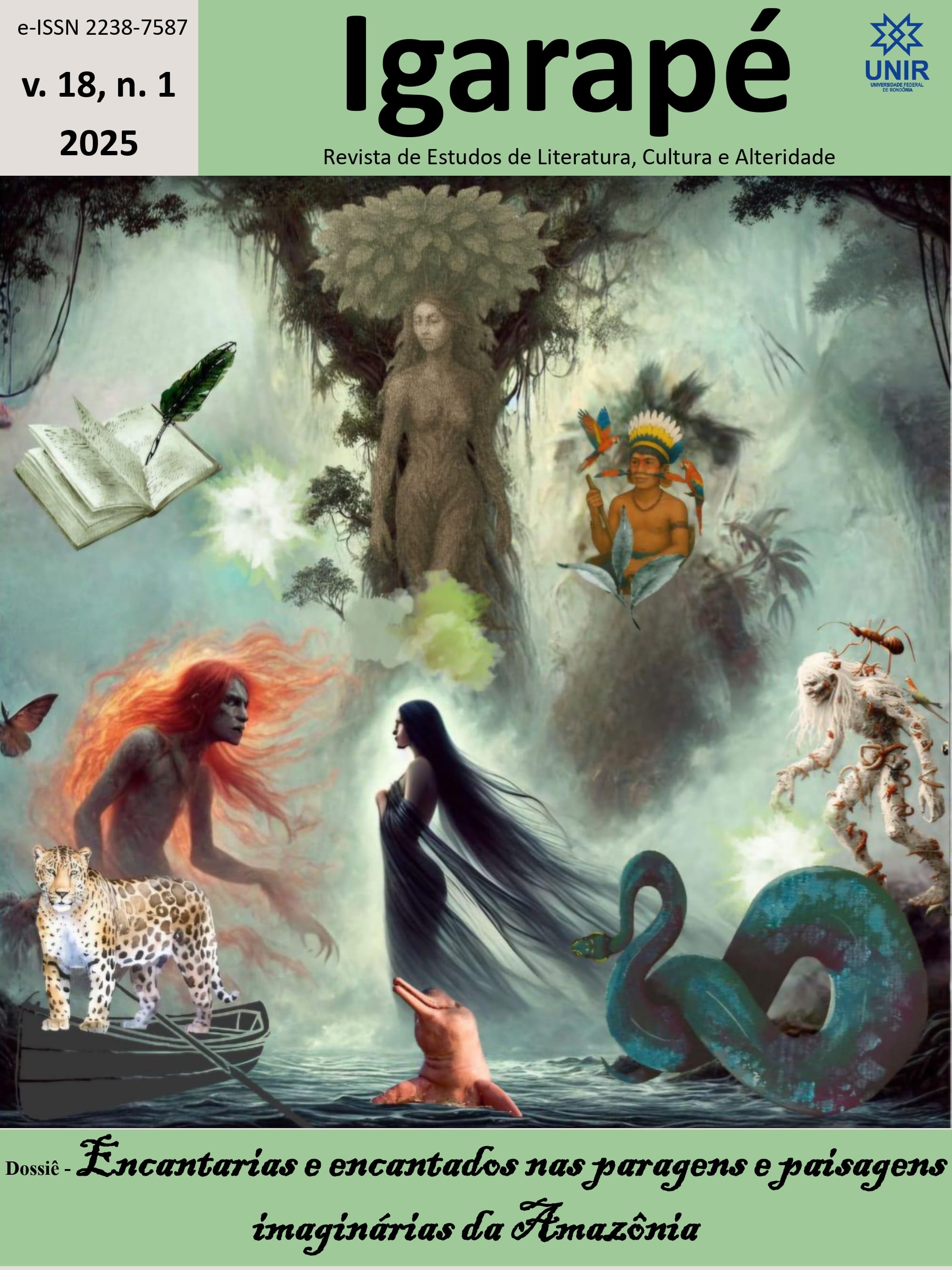The haunting and the wonderfoul real in Amazon oral narrative
The Tree Woman
DOI:
https://doi.org/10.47209/2238-7587.v.18.n.01.8696Keywords:
Woman, Oral narrative, Haunting, Wonderful reality, AmazonAbstract
This article aims to analyze the haunting element and its relationship with the marvelous real into the oral narrative The Tree Woman, popularly known in the Porto Velho-Rondônia region. Throughout the domination of Amazonia, black and indigenous women have been made invisible, their bodies objectified and exploited, revealing doubly colonizing practices in gender relations and ethnic differences evidenced in the narratives circulating in this region. The haunting figure of the woman, in the shape of a tree, brings her image closer to the monstrous. That same monstrosity is part of the marvelous element that makes a woman emerge from the tree. The results indicate that, in the women’s inferiorizing process in the Amazon region, the fear presented in the haunting - and often monstrous and in a witch shape - was and continues to be strategically used in colonizing practices in gender relations, in a systemic and structural way, maintaining patriarchal and sexist attitudes towards women.
References
ASHCROFT, Bill; GRIFFITHS, Gareth; TIFFIN, Helen. The empire writes back – theory and pratice in pos-colonial literatures. London: Routhedge, 1991.
BELLEI, Sérgio Luiz Prado. Monstros, índios e canibais: ensaios de crítica literária e cultural. Florianópolis: Autêntica, 2000.
CARPENTIER, Alejandro. O reino deste mundo. Tradução de José Manuel Lopes. Espanha: Saída de Emergência, 2011.
COHEN, Jeffrey Jerome. Pedagogia dos monstros os prazeres e os perigos da confusão de fronteiras. Belo Horizonte: Autêntica, 2000.
JEHA, Julia. Monstros como metáforas do mal. In: JEHA, Julia (Org.). Monstros e monstruosidades na literatura. Belo Horizonte: Autêntica, 2007, p. 9-31.
KRAMER, Heinrich; SPRENGER, James. O martelo das feiticeiras. 32. ed. Tradução de Paulo Fróes. Rio de Janeiro: Rosa dos Tempos, 2023.
LOUREIRO, João de Jesus Paes. Cultura amazônica. 5. ed. Manaus: Valer, 2015.
MAUÉS, Raymundo Heraldo. Uma outra invenção da Amazônia: religiões, histórias, identidades. Belém: Cejup, 1999.
MICHELET, Jule. A feiticeira. 2. ed. São Paulo: Aquariana, 2019.
NOGUEIRA, Mara Genecy Centeno. Histórias de assombração nos territórios da morte em Porto Velho na primeira metade do século XX. In: XXVIII SIMPÓSIO NACIONAL DE HISTÓRIA: lugares dos historiadores velhos e novos desafios. Anais [...]. Florianópolis, 2015. Disponível em: 1548945020_a5bbb7306290698e338293fb8d64c40b.pdf (anpuh.org.br). Acesso em: 07 jan. 2025.
NOGUEIRA, Mara Genecy Centeno; SAMPAIO, Sonia Maria Gomes. Cruz credo! Lendo a cidade de Porto Velho por meio de narrativa de assombração. Humanidades e Inovação v. 7, n. 23, 2020, p. 97-108. Disponível em: Narrativas de assombração - cita mulher árvore e mulher cobra.pdf. Acesso em: 27 jan. 2025.
RANGEL, Alberto. Maibi. In: RANGEL, Alberto. Inferno verde. 5. ed. Manaus: Valer, 2001.
ROCHA, Carolina. O sabá do sertão: feiticeiras, demônios e jesuítas no Piauí colonial (1750-1758). Jundiaí: Paco Editorial, 2015.
SOUZA, Márcio. História da Amazônia: do período pré-colombiano aos desafios do século XXI. 2. ed. Rio de Janeiro: Record, 2019.
TUAN, Yi- Fu. Paisagens do medo. Tradução de Lívia de Oliveira. São Paulo: UNESP, 2005.


